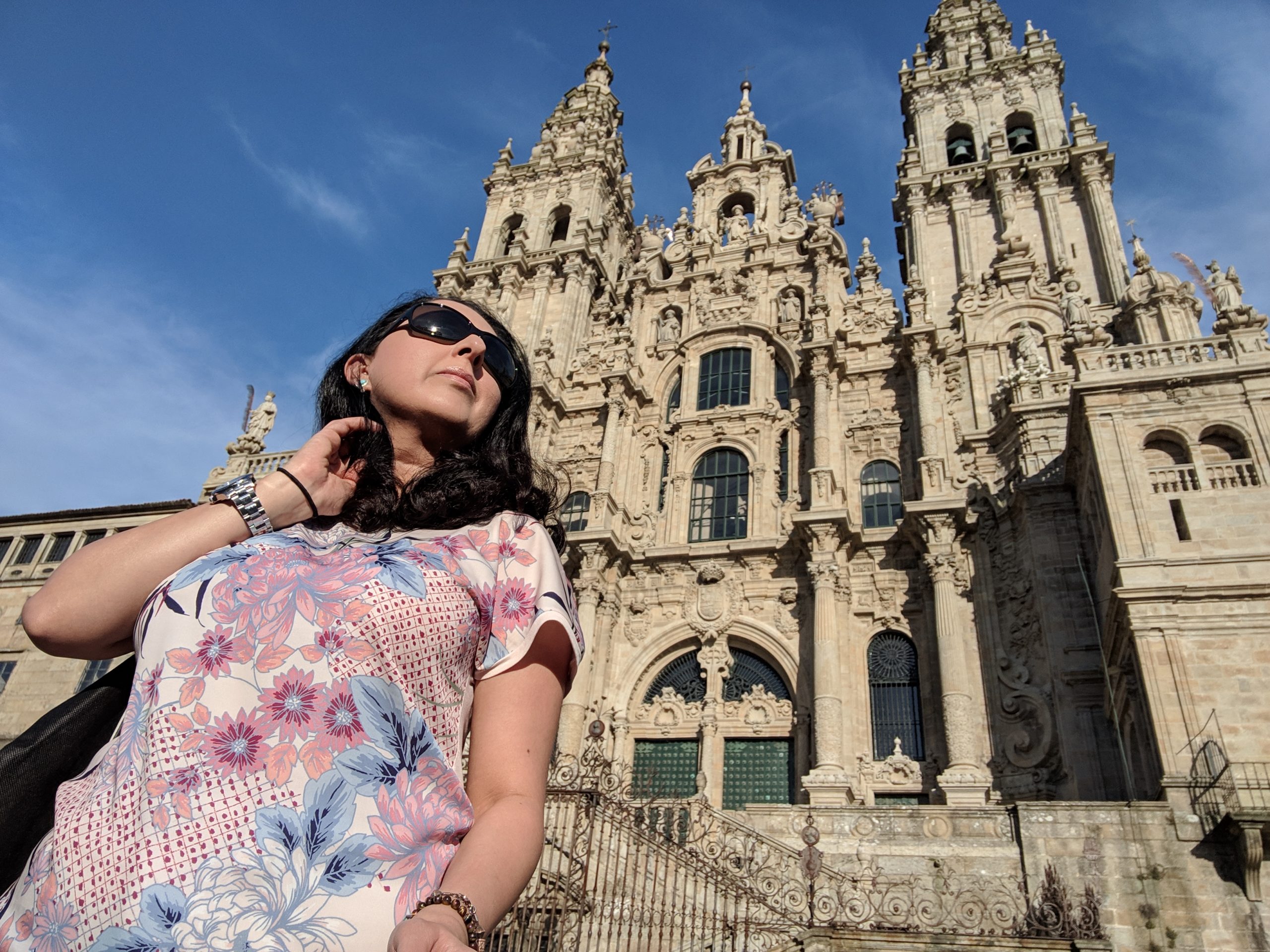I haven’t read Paulo Coelho’s book ‘The Pilgrimage’ I probably should have from all the comments people have been sending me.
This wasn’t a religious pilgrimage for me but more of a journey of a soul seeking some answers from the universe only to find out that the answers always would come from within.
Why do the Camino de Santiago?
Many take this challenge on as a religious pilgrimage, from all parts of Europe people would and still do walk from wherever they are to Santiago de Compostella, no matter how many weeks or months it would take them. That was/is their devotion to the divine.
Over time, the route became treaded by spiritual people and those seeking a calm refugee in nature, those who wish for a challenging hike or simply a new discovery of land they have not visited before.
Whatever your purpose is you will find something along the Camino that is worth finding.

Which route to take?
There are many routes that lead to Santiago, well over ten. The most famous and most popular one is the French way from the Pyrenees mountains. There’s also the Portuguese way and the costal Portuguese way as well which is best done during the summer to enjoy a dip in the water at the end of a long day of walking.
You can also walk from Santiago to Finisterre, which is also known as the end of the land. That is before Christopher Columbus found out about America and the shores of Spain were thought to be the edge of the world.
I chose that route, from Santiago to Finisterre and then carried on to Muxia, many who do this route for religious reasons consider there pilgrimage incomplete if they haven’t carried on to Finisterre and Muxia and some hikers reach Santiago and they are still thirsty for more so they keep on the route.
It is pretty much off the beaten path kind of route, I really enjoyed it, but you need to be someone who is at peace with being on their own and brave to navigate the route which at times can be hard if you’re alone.

The French way takes about 95% of the pilgrims, spiritual experience seekers, and hikers. the reminder 5% will walk the other routes and so expect to have very low numbers in the less trodden routes.
I went off seasons and off the beaten path and I probably came across one or two other Camino walkers per day.
When to go?
The high season is July and August but that’s when the weather can get quite hot, the best time to go is in May and June and then again in September when the weather is milder and the days are longer. Winter times can be quite frosty, dark, and lonely.
I went in the last week of February, there were days where it was warm but on the whole, I needed layers and a waterproof jacket.
The weather in Galacia Spain is different to other touristic parts of Spain, so don’t lead yourself to believe it follows the same seasons. Always check the weather and check you have the right gear.
How to arrange a trip?
Broadly speaking there are two ways you can enjoy this unique experience, you can do this whether a solo traveler, with a friend, a group and at any age, whether you’ve traveled before, hiked before, or not. You just have to know your limits and plan accordingly.
1- Decide which route, decide your starting point then take a map, your backpack, and set off.
As simple as that.
There’s is a John Brierley Camino guide book that lays out the route, the elevation of the land, detailed instructions, and directions, and also amusing stories about the area. You can literally just follow that.
With this way, you can either prebook your accommodation along the way, which requires you to decide how far you’ll walk every day or you can stop when you want along the route and check out the accommodation options, the downside to the latter is that if there’s no accommodation available especially in high season you’ll have to keep walking.
2- You’re not sure how to plan it, you’d rather have your accommodation sorted ahead of time and you’re not a backpacker
You can find a travel agent or a company that would do all the hard work for you. I did my research for a long time before I finally made the bookings, I’ll be delighted to help you plan a bespoke trip tailored to your needs.
We can talk about which route is best to take, how far you’d want to walk per day and where you’d like to stay overnight.
Transfer service for luggage can be arranged so you are light as a feather on your daily walks.
3- You can mix and match, for example; pick your map and use a courier service to move your luggage, or take your backpack, and have a travel agent design your route. Really anything is possible. You can prebook or arrive there and figure it out.
Generally, people will stay one night in the accommodation and then move on, but some especially when walking for 5-6 weeks would stay at certain locations for 2-3 days to enjoy the local life and allow their feet to recover.
Not sure about traveling solo safely – can it be done?
Check out my traveling solo safely guide, packed with tried and tested tips and tricks to keep your safe and sound
How many days are enough?
That largely depends on your intention, where you want to start from, how far you can walk in a day, and if you intended to have long stops.
Parts of the route are suitable for novice hikers but on the whole, expect the majority of the terrain to be more suited for a medium-level to experienced hiker so that could potentially be your match or slow you down.
Many people choose just to walk the 100KM or so to Santiago, that way they will have done what they need to attain a certificate of pilgrimage. If you’re on the French route then the starting point is Saira which is about 110KM away from The Cathedral. The whole of the French route is about 850KM so that could easily take 5-6 weeks to walk.
My route was about 117KM, although I was walking away from Santiago when I reached Finisterre and then Muxia I was still able to get my certificates for both! I walked over 7 days with no stop days in between.
Would I need to get fit prior to taking on the walk?
I was strongly advised to train for my week of hiking for about 6 months! the company I booked with sent me a brochure highlighting how I should start my training and build it up so I’m in top shape when I get there.
I didn’t do it for two reasons, one I didn’t have time. I booked about 2-3 weeks prior to setting off. The second reason was I didn’t think I would have needed it. I’m someone who in their daily life does an average of 7000 steps a day and I’m pretty healthy and I know I’m a walker, but my god did I regret not training before I started.
I did power through and got there without delays but had it all from feet blisters to aching muscles to waking up the second day feeling like I have been beaten up and ran over by a car. The days that I had to walk 20KM were the toughest, I found myself I could manage 16KM with a bit of a push. I gave myself a massive push for the days I needed to walk longer simply because my luggage was already transferred to my following pre-booked accommodation and there are no taxis in the woods!

